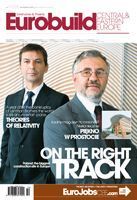No matter how many warehouse parks I look at, I always have the impression that they are all the same 
– tin boxes which differ only in the colours of some of the elements. Even though the main priority is usually to optimize costs, everyone would still rather operate from ‘prettier’ premisesEmil GóreckiThis is the way people who do not have anything to do with the warehouse market think. But those who have worked longer in this sector can see not only the practical qualities of warehousing, but the aesthetic ones as well. “The beauty of a warehouse is not very high on the list of clients’ requirements, but it is true that warehouses are becoming ‘prettier’ ie. more aesthetically-pleasing, thanks to professional signage, well cared for green areas, as well as increasingly modern building materials,” maintains Robert Dobrzycki, managing partner






























































